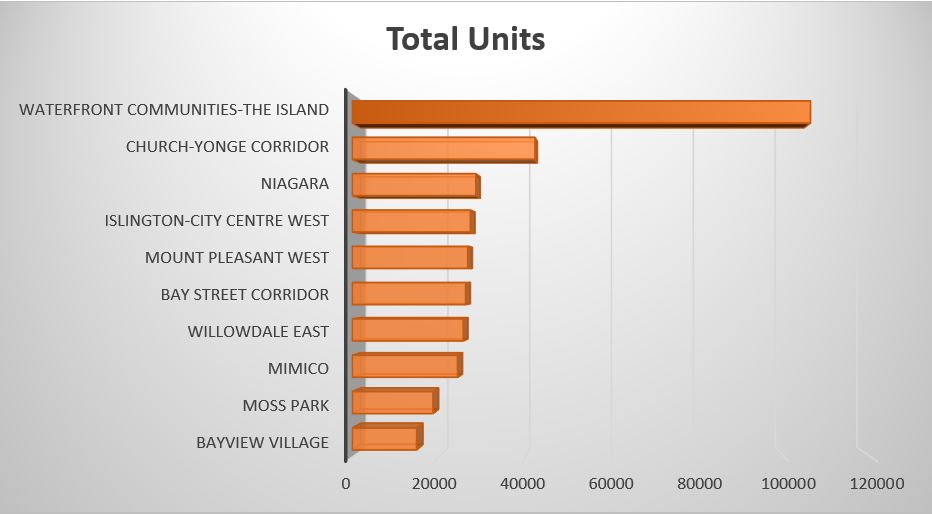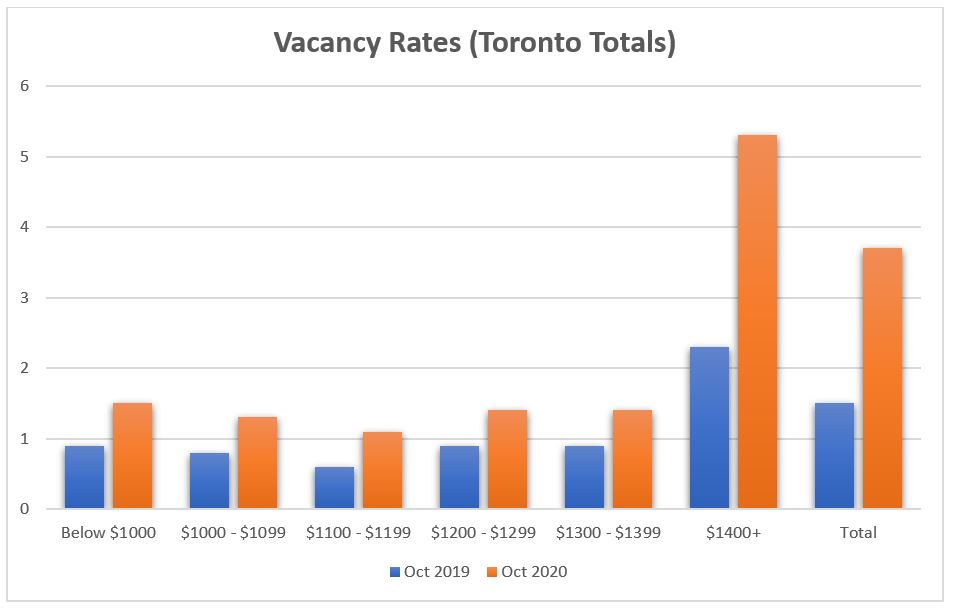
In this article we will continue to explore the topic of apartment rental rates in Toronto. Last time we looked into the opportunities to rent in the areas with the best public schools in the city. Today we will analyze rental rate trends and their relationship to the expanding number of apartments (especially within the rapidly growing condominium sector) in Toronto.
At Hausworth.com, we use open data available from various federal, provincial, and municipal sources complemented by crowdsourced data that our visitors share with each other. Recently, we kicked off a rental survey to augment the data available from rental listing sites and get a better picture of the actual rates tenants currently pay in various areas of Toronto.
We will utilize some of the information gathered so far alongside open data about apartment buildings and condominiums in the city, focusing primarily on the total number of available units.
In our analysis we look at the total number of units versus the population of each of Toronto’s 140 officially recognized neighbourhoods, as reported by the City for 2020. For neighbourhoods with an abnormally high number of units vs population rate we anticipate favorable rental rates due to oversupply. Conversely, for neighbourhoods with a lower than average number of units per resident we anticipate rates to be higher and increasing, especially as the after-effects of the pandemic crisis fade away.
Of course, the best Toronto neighbourhoods with desirable locations, great schools, high levels of safety etc, will continue to command higher rental rates for comparable quality apartments relative to other areas. But even in such neighbourhoods, oversupply can and does cause correction in rental prices, so a bit of research and patience can really pay off.
First, let’s look at the neighbourhoods with the highest overall combined number of rental apartments and condo units.

Downtown areas of Waterfront and Church-Yonge Corridor lead the way with Waterfront by far dominated by condominium units, and Church-Yonge Corridor also heavily skewed towards condominiums, but a little more sizeable (approximately 30%) share of units in rental apartment buildings.
As mentioned earlier, now let’s look at the total number of units per neighbourhood relative to the density of population in each.
Taking Waterfront and Church-Yonge Corridor as an example, City of Toronto statistics estimates the population in the Church-Yonge Corridor neighbourhood is less than half of that at the Waterfront. Which means that portion (or “density”) of units potentially available for rent in these 2 neighbourhoods ends up being almost the same, as there are many more of those units available per resident in Church-Yonge Corridor.
With that in mind, here are the neighbourhoods in Toronto where we find the highest density of units potentially available for rent – and estimate good deals likely to be found by prospective tenants. The higher the number, the more likely there is oversupply in the area.
| Neighbourhood | Population 2020 (estimated) | Rental Unit Density |
| Waterfront Communities | 87,808 | 120% |
| Church-Yonge Corridor | 39,279 | 107% |
| Regent Park | 13,131 | 100% |
| Bay Street Corridor | 32,790 | 80% |
| Moss Park | 23,905 | 78% |
| Niagara | 37,931 | 75% |
| Mount Pleasant West | 36,333 | 73% |
| Mimico | 38,739 | 62% |
| North St.James Town | 20,595 | 62% |
| South Parkdale | 24,212 | 60% |
Overall, we see the oversupply trend of rental/condo units in 15 out of 140 neighbourhoods.
Indications of the trend can be found in other sources as well. For example, the recent study by the Canada Mortgage and Housing Corporation found that on average vacancy rates in the universe of the apartments CMHC is tracking has roughly doubled between October 2019 and October 2020 – increasing from 1.5 to over 3.7%. The biggest increase in vacancies was among the most expensive rental apartments: it grew 2.3 times to the vacancy rate of approximately 5.3%.

We should also keep in mind that condominium construction continues at a good pace, so more condominiums are expected to be completed across the city over the course of at least the next few years (currently completed condos in Toronto are registered at a rate of 5-7 per month). This will also contribute to the pressure on rental rates, especially in the areas with abundant supply that do not have a strong appeal.
You can find more details about each Toronto neighbourhood on HausWorth.com, your source of information about the best areas to live in Toronto. You will also be able to compare overall neighbourhood standings based on additional criteria, such as safety, immigration, demand for houses etc, as well as see resident profiles for neighbourhoods and city blocks.
YourSavings.ca was not involved in the creation of this content. Information contained on this page is provided by an independent third-party content provider. YourSavings.ca makes no warranties or representations in connection therewith.

